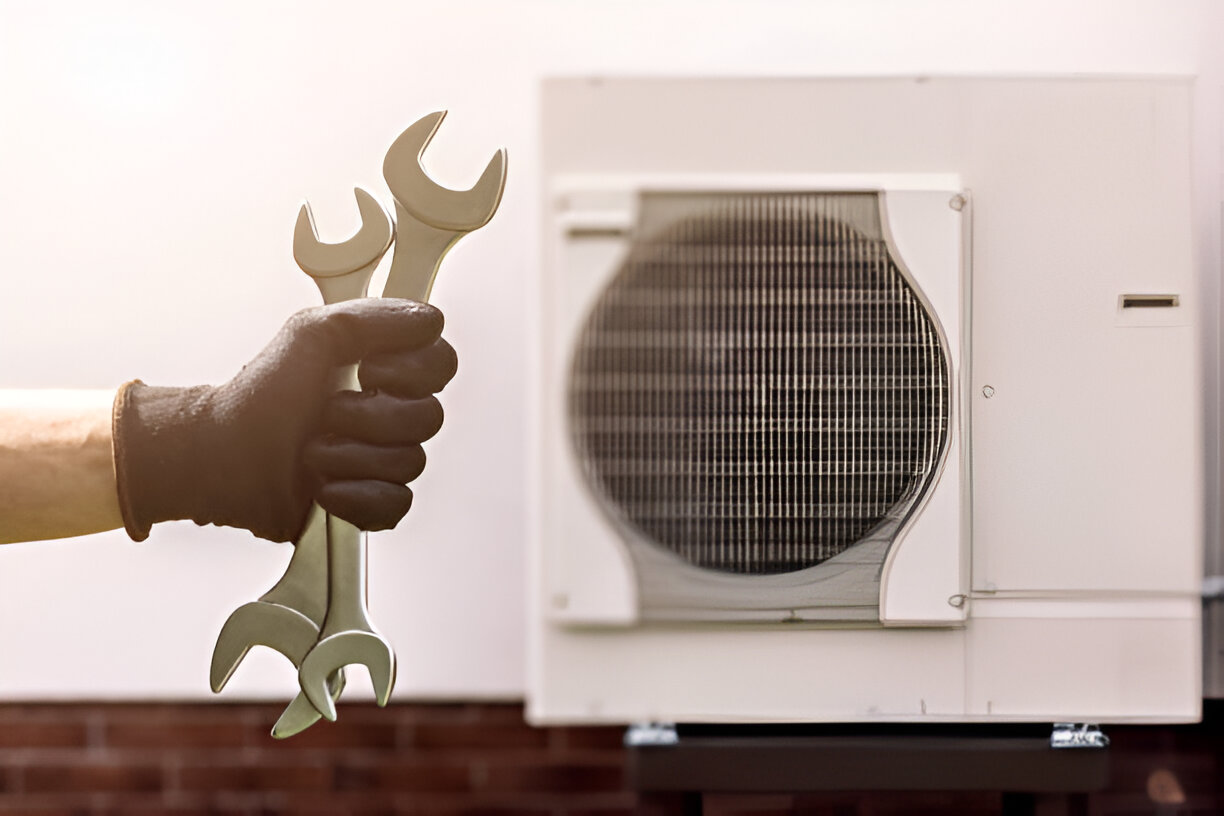Heat Pump Installation in North Phoenix, AZ
Upgrading to a professionally installed heat pump is one of the most cost-effective ways to gain year‑round comfort and lower energy bills in North Phoenix, AZ. With long, hot summers, mild winters, and sudden monsoon humidity swings, homes in this area need systems sized and configured specifically for desert conditions.

Why choose a heat pump for North Phoenix homes
- Year‑round comfort: modern heat pumps provide both efficient cooling during triple‑digit summer heat and effective heating in cooler months without a separate furnace.
- Lower operating costs: heat pumps move heat rather than generate it, which typically reduces energy use compared with electric resistance heating and can outperform older HVAC systems.
- Better humidity control: properly matched systems and controls help manage indoor humidity spikes during monsoon season.
- Eligibility for manufacturer warranties and occasional local incentives when installed to code and registered.
Common heat pump issues in North Phoenix
- Uneven cooling or heating across rooms due to improper system sizing or duct issues
- Short cycling caused by oversized equipment or poor refrigerant charge
- Reduced efficiency from leaky, undersized, or poorly insulated ducts in attic spaces
- Outdoor unit stresses from dust, high temperatures, and monsoon debris
- Incorrect refrigerant charge after replacement or retrofit work
Understanding these common problems helps ensure the new installation addresses root causes, not just symptoms.
Initial on-site assessment and load calculations
A reliable installation starts with an on-site evaluation and a professional load calculation (Manual J). This includes:
- Measuring the home’s square footage, insulation levels, window types, orientation, and sun exposure
- Checking attic and duct conditions, thermostat locations, and electrical service capacity
- Calculating heating and cooling loads for each zone to determine correct system size
Proper sizing avoids the pitfalls of oversized or undersized systems. Oversized heat pumps short‑cycle and increase wear; undersized units cannot maintain comfort during peak conditions.
Selecting an energy-efficient, climate-appropriate model
North Phoenix installations favor equipment designed for high cooling capacity and reliable year‑round operation. Key selection criteria:
- High SEER and HSPF ratings for better seasonal efficiency
- Variable‑speed or inverter compressors for improved humidity control and quieter operation
- Models built to withstand desert heat, dust, and monsoon conditions
- Manufacturer support: Day & Night systems are commonly recommended in the area for their proven performance; other reputable manufacturers may also meet local needs
Equipment selection also includes matching outdoor unit capacity to indoor coil and existing ductwork, or recommending ductless/mini‑split options when appropriate for individual rooms or additions.
System sizing, ductwork, and electrical considerations
- Proper system sizing based on load calculation, not rule‑of‑thumb tonnage
- Duct inspection and recommendations: sealing, insulating, or resizing ducts to prevent inefficiency and comfort issues
- Electrical upgrades: verifying breaker, disconnect, and service capacity to support the new heat pump and safety requirements
- HOA and local code checks: ensuring installation plans comply with North Phoenix and Maricopa County codes, roof or wall unit placement rules, and any HOA restrictions
Permits and code compliance
All installations should comply with local building codes and require the appropriate permits. Professional installers will handle permit applications, inspections, and documentation required for warranty registration and potential future resale disclosures. This includes following EPA refrigerant handling rules and state electrical codes.
Typical installation steps and timeline
Installations vary by home complexity, but a standard central heat pump replacement or first‑time installation generally follows these steps:
- Final on-site verification and equipment delivery
- Removal and disposal of existing equipment if present
- Duct and indoor coil inspection; repairs or modifications if needed
- Outdoor unit placement and secure mounting on pad or curb
- Refrigerant line installation, insulation, and brazing (when applicable)
- Electrical wiring and installation of safety disconnects
- Indoor coil hookup, condensate setup, and thermostat/control integration
- Evacuation, refrigerant charging to manufacturer specifications, and leak testing
- Startup, system balancing, and homeowner orientation
- Final performance testing and documentation for warranty
A straightforward swap typically takes 1 to 2 days. More complex installs—new ductwork, electrical upgrades, or multi‑zone ductless systems—can take several days to a week.
Warranty and manufacturer support
Quality installations include manufacturer-backed equipment warranties and separate labor warranties on workmanship. Homeowners should:
- Register the equipment with the manufacturer to activate full warranty terms
- Keep installation documentation and load calculation reports for future support
- Understand common warranty coverage: compressors and major components are usually covered by manufacturers, while labor warranties vary by installer
Post-installation performance testing and optimization
After installation, technicians perform detailed performance checks:
- Verify correct refrigerant charge and compressor operation
- Measure airflow, static pressure, and temperature differentials
- Test defrost cycles and auxiliary heat operation during cooler periods
- Calibrate thermostats and controls for optimal comfort and efficiency
Practical homeowner tips to maintain efficiency:
- Keep outdoor unit clear of debris and vegetation, especially before and after monsoon season
- Replace air filters regularly and schedule annual professional tuneups
- Insulate attic ducts and seal registers to reduce losses in extreme summer heat
- Use programmable or smart thermostats to reduce runtime during unoccupied hours
Financing and promotions
Many installers and manufacturers offer financing options and occasional promotional programs to make an upgrade more manageable. Homeowners should ask about available plans, special rates for qualifying equipment (for example, certain brand promotions), and any seasonal incentives that apply to North Phoenix installations.
Long‑term benefits of a professional installation
A correctly specified and installed heat pump delivers:
- Greater year‑round comfort and balanced indoor temperatures
- Lower utility costs through improved efficiency
- Reduced emergency repairs with properly executed startup and testing
- Extended equipment life backed by manufacturer and labor warranties
In North Phoenix’s climate, investing in a climate-appropriate, professionally installed heat pump pays off through improved comfort, better humidity control during monsoons, and dependable operation through peak summer demand.
Customer Testimonials
Hear directly from our customers about the quality, honesty, and care we bring to every job.










